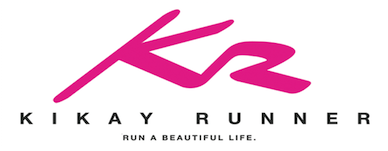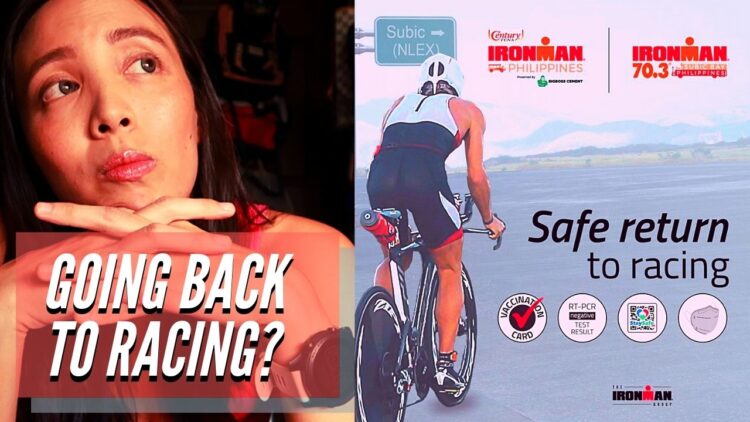It is the year 2022, the pandemic is still ongoing, but we are kind of approaching more normalcy in many aspects of life. That includes mass participation events like fun runs, marathons, and triathlons.
I am somebody who used to participate in many races at the drop of a pin, but that was in the “before times”. These days there are a few more things that you have to consider before actually signing up for a race. I know runners and triathletes are so gung-ho about signing up for races; we usually just close our eyes and click on that register button without thinking of the implications.
The National Age Group Triathlon race in Subic that happened two weeks ago was the first open race that was held during this pandemic. (Prior to this there were a number of other events, but they were invitational.) Next month we have Ironman Philippines which many thought would be postponed but surprisingly is pushing through. There’s also TinMan Ilocos Norte two weeks after that.
Sunrise Events/Ironman Group announced that they’re bringing the Rock ‘n’ Roll Marathon series to the Philippines and on February 14 opened registration for the first event. Go Clark, the events organizing company that manages many of the events in Clark, Pampanga, has also announced a whole slate of races to be held throughout this year.
As a fan of GoClark I was so tempted to say I would sign up for these races once they open the registration, but check out below why I’m holding off on making that commitment.
Here’s what you need to consider before actually signing up for any of these races. These are extraordinary times, so we do need to take extraordinary care before returning to sport.
Fitness
First of all, consider your fitness. A lot of us during this pandemic weren’t really training towards anything, we were just maintaining fitness. Consider whether you have enough time between when you sign up and the race date to get your body prepared for the rigors of that race. Obviously, if you’re signing up for a 5k and you’ve been running three times a week for the past two years, that’s not going to be a problem. But I would be concerned if you signed up for a marathon four weeks before race day.
Also, do you have access to the training venues that you need to get ready? This applies especially to triathletes because a lot of our pools were under closure throughout this period. That doesn’t lend any consistency to training, so your swim split and your ability to handle open water might be affected by this.
Additional Cost
The next thing to consider is cost. The NAGT required three things before you could race: a vaccination certificate, a medical certificate, and an RT-PCR result from the last 48 hours.
I know that vaccinations are free, so if you haven’t gotten vaccinated yet this is your sign to go get it. Medical certificates — you know, if you have a friend who’s a doctor and willing to give you one for free, then great. But otherwise there is an associated cost to getting a medical certificate.
Lastly, RT-PCR tests aren’t free OR cheap here in the Philippines; they cost around P2,500 (USD $50). There are ones that are cheaper (under 2000 pesos) but those aren’t guaranteed to give you a quick turnaround. That is an expense that you will have to include in the things that you need to pay for when you’re going to go race.
Initially the Triathlon Association of the Philippines (TRAP) were going to use protocols based off the World Triathlon protocol for elite athletes used for the 2021 World Triathlon Championship Series as well as the Olympic Games: mandatory quarantine, only supervised course recons, and testing onsite. Thankfully and under the present alert levels in the country that’s no longer the case. The thing is: elsewhere in the world you’re not required to present a negative test result to race if you’re vaccinated. This is an IATF requirement (Inter Agency Task Force against COVID-19); these are the guys that determine our alert level and what we’re allowed to do at these alert levels. I guess as part of the agreement to be able to hold mass participation races, they said to the organisers that they’d have to require participants to present negative RT-PCR results.
Other races around the world were able to hold their events and proved that there were no chains of transmission established during these events. For instance, Challenge Roth last year in September required their participants to present either a vaccination certificate OR a negative test result. They tracked participants for a bit after and were able to demonstrate that holding their race didn’t worsen the infection rate in their region.
Obviously with the Omicron variant, that might change the calculus a little bit there. I’m certainly not one to say that the IATF shouldn’t require PCR test results. (Conversely, this is another reason to campaign for the government to subsidise testing further to make it available for more people.) I am concerned mostly that the requirement can lock out a significant number of the population engaged in mass participation races.
Appetite for Risk
Lastly you have to consider your level of comfort or appetite for risk. Every interaction with other people carries with it a level of risk ranging from low to high. Staying home with people who also stay at home is very low risk. Getting my hair done last week was a bit more risky than usual, but I stayed masked and went to a reputable salon with vaccinated and tested employees. For mass participation racing you have to decide what’s an acceptable level of risk for you. Being outdoors amongst vaccinated people who present a negative test is pretty low risk, so if you’re comfortable with everything that entails then go ahead and sign up for the race.A
Another risk you take on when signing up is that even though the situation is stable right now, that could still potentially change in the near and far future. If you’re signing up to a race, you have to assume the risk that these races might not push forward or they might push forward but in a different form than what you originally signed up for.
I’m not going to tell you “don’t sign up”. Last year I said I wasn’t signing up; this year I’m taking a wait and see attitude until the protocols and procedures have been established. I’m very positive that I will get to race in the second half of the year, so my current project is building up my base fitness so I don’t have to do much catch up when I do sign up.

